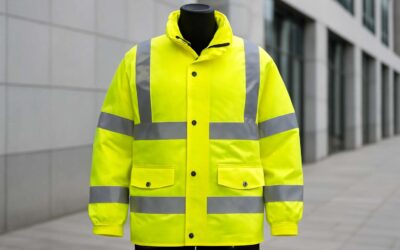
PPE (personal protective equipment) is used to protect employees from potential injuries, such as slips, falls, sprains, and cuts. It also protects the head, eyes, hands, feet and other parts of the body, as well as prevents injury from chemical, biological and heat sources.
A wide variety of workplace safety clothing is available for workers to wear when working in potentially hazardous environments, such as oil and gas production, manufacturing, logging, construction, mining, and many other industries. Some common types of PPE include hard hats, safety glasses, safety goggles, safety vests, fire retardant work clothes, safety shoes and foot guards, and gloves.
In most workplaces, employers are required to provide their workers with personal protective equipment. They must also ensure that their employees understand how to use the equipment and how to keep it clean and sanitary.
Employers can also require their workers to wear certain types of clothing at certain times of the day, if they believe that their employees might be exposed to hazards, such as loud noises or dust, hot surfaces or substances, chemicals, flammable materials, or biological agents. Providing this kind of PPE is an important part of maintaining an employer’s legal and moral responsibility to their employees, as it can significantly decrease the likelihood of employee injury or loss of life.
There are several different types of protection available to meet the needs of various workplaces, and it is best to consult with an expert when selecting the most appropriate type for a specific application. Some of the most important aspects of selecting protective apparel include its minimum weight and maximum flexibility, and its ability to withstand heat stress and provide good air flow.
For example, Tyvek and Tychem fabric materials offer high-barrier, high-strength materials that excel in these areas. They also provide excellent abrasion resistance and tear strength.
The material is also a major factor in the comfort of the garment. A good quality fabric can reduce worker’s discomfort and fatigue caused by heat stress, cold weather exposure, and physical activity.
A good fabric also allows sufficient air flow to prevent heat stress and provides adequate insulation from the elements. Moreover, it should be lightweight and flexible enough to withstand the demands of a busy work environment.
Another consideration is odor control, which is particularly important for those who are regularly exposed to hazardous chemicals or other environmental contaminants. Several protective fabrics are now available that are designed to remove or neutralize odors.
High-visibility apparel is an essential piece of workwear for anyone who works in a low-light or dark environment, especially during the winter. These shirts, T-shirts, jackets, and pants are available in a variety of colors and styles and are ANSI-rated for optimum visibility.
For those who work in warmer climates, choose long-sleeve or short-sleeve shirts with reflective or moisture-wicking designs that keep you comfortable and visible even when the sun is bright and causing reflections that can make you harder to see.



0 Comments